Imagine something very joyous happens in your life. What will you do to celebrate it? Perhaps throw a party, buy some stuff or maybe visit a religious place to thank God. Now, imagine you are the emperor of one of the wealthiest empires in the world. What would you do now? Well, perhaps you would like to build an entire new capital city for your empire because that is exactly what Emperor Akbar did. Fresh from his victories over Rajputana strongholds of Chittor and Ranthambore and to honour the sufi saint Salim Chisti who had correctly predicted the birth of Akbar’s son, Akbar decided to build a new capital city named Fatehabad next to the village of Sikri. This capital city, which has the status of a UNESCO heritage site, is today known as Fatehpur Sikri.
While our morning was spent admiring the beauty of Taj Mahal, our afternoon was dedicated to exploring the vast expanse of Akbar’s capital city. It took us almost an hour to drive from our hotel in Agra to Fatehpur Sikri. We parked our car in the parking lot and then took a bus to the entrance gates of the heritage complex. After shooing away a few guides and many local kids who kept insisting on showing us around, we bought the tickets, an audio guide and made our way to the imperial complex.
The imperial complex consisted of palaces, residential complexes, private quarters, administrative buildings, performance areas etc. Some of these buildings were quite beautiful and had intricate carvings and designs. The first structure we visited was the Palace of Jodha Bai which was built for Akbar’s queens. An amalgamation of Mughal and Rajput architechture, this palace boasts of a Hindu temple and a Tulsi plant in its courtyard. The other noteworthy structures were the Rasoi Khana, Mariam’s Palace, Birbal Bhavan and the Haramsara.
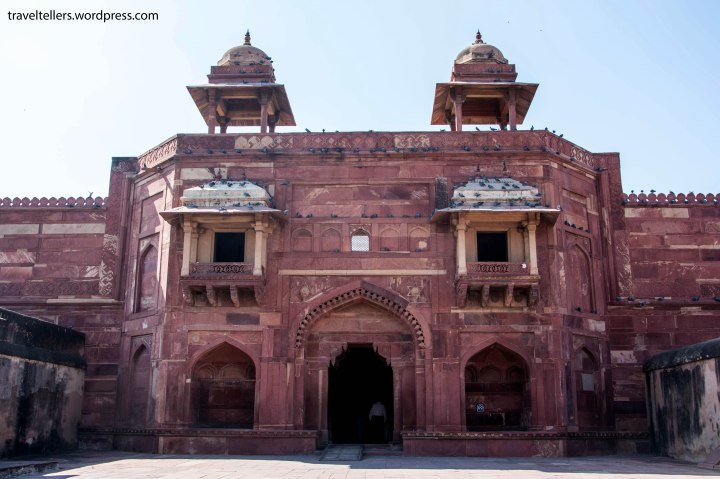
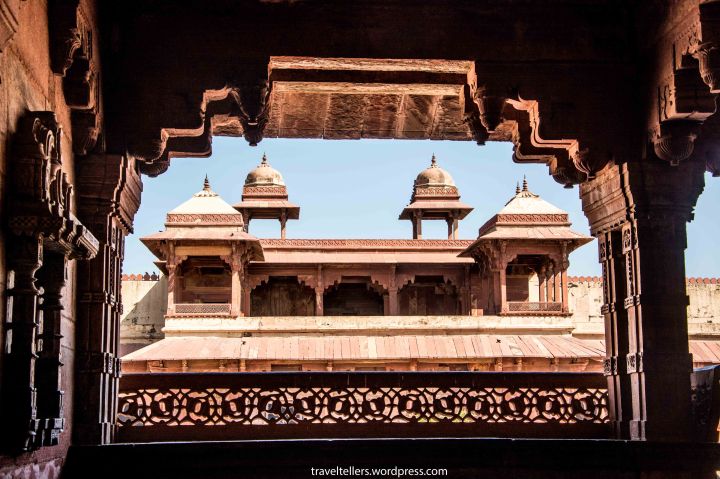

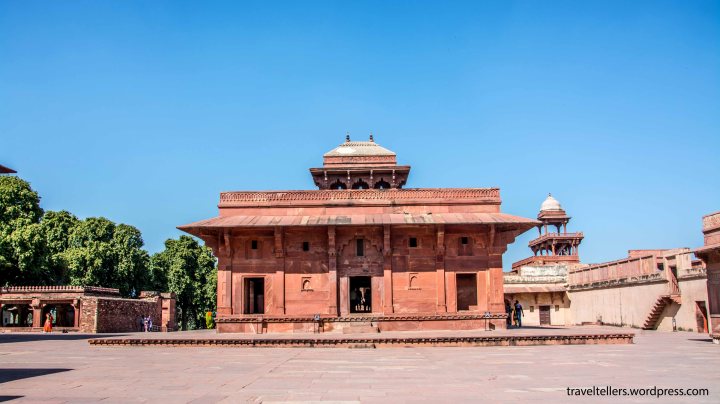


Next we visited another enclosure which consisted of the Khas Mahal which was the royal residence of the Emperor, Anup Talao, the striking Sultana’s House, Diwan-I- Khas, Astrologer’s seat and Panch Mahal.
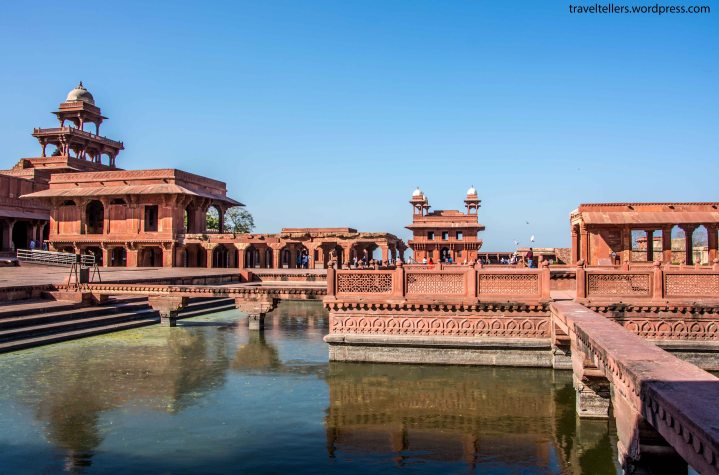
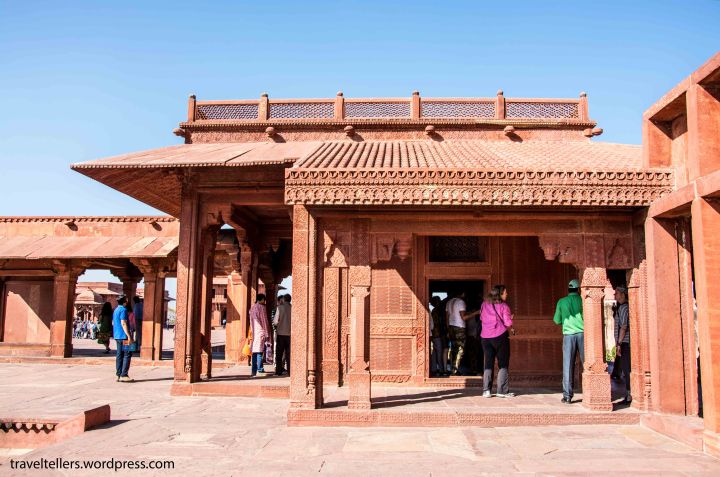




One very surprising thing for us was that even the official audio guide was quite sketchy on the actual purpose of various buildings. For example, the audio guide mentioned that one particular building was known as Birbal’s (an advisor to Akbar) house but then went on to say that it was very unusual that a man would be living in a complex that was particularly reserved for women hence this building may have been used for some other purpose.
After visiting the Imperial complex, we moved towards the Mosque complex. Apart from the mosque itself, this complex consisted of a couple of stunning structures. One of the them was the tomb of saint Shiekh Salim Chisti which was the only building in Fatehpur Sikri to be made of white marble. This was probably the emperor’s way of showing reverence to the saint. The latticed marble screens were the highlight of this structure. The second structure was the imposing Buland Darwaja – a 55 m high arched gateway built to commemorate Akbar’s victory of Gujarat.

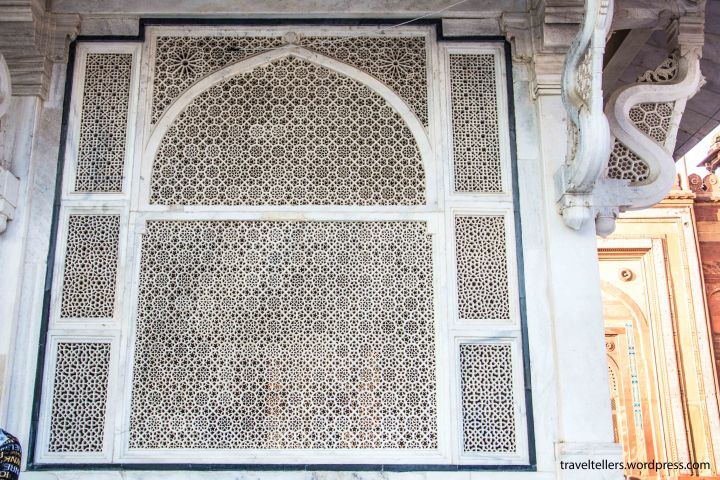

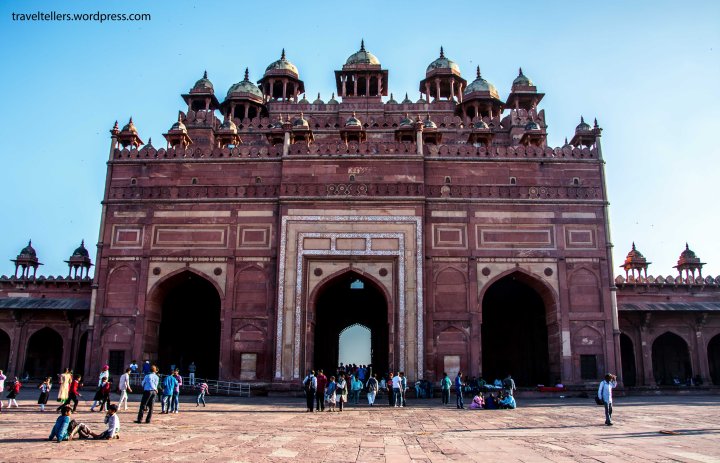


Fatehpur Sikri is one of the finest examples of Mughal architecture in India and is an amalgamation of many different schools of architecture. Just like most of the other buildings constructed during Akbar’s era, Fatehpur Sikri also employs red sandstone as the primary construction material. But unfortunately, while emperors had the power and means to build great cities they were not immune to mistakes. The water source for the entire city was a lake next to it and not able to take the load of the additional population it soon went dry and this capital of the Mughal Empire was eventually abandoned.



Stunning pictures and great reportage, my congratulations! 🙂
LikeLiked by 1 person
Thank You so much 🙂
LikeLiked by 1 person
Great post on the splendour of Fatehpur Sikri! Your country is so rich in history and culture that I fear I don’t live long enough to read all about it. I like your last sentence best, as it gives mankind something to think about how we all depend on the precious resource called water.
LikeLiked by 1 person
Thank you Peter 🙂 We ourselves haven’t seen so much of our country yet but hope to do so gradually.
LikeLiked by 1 person
Wow! Incredible indeed. Have to be on Mel’s list the next time he gets time off from business and when he gets to India!
LikeLiked by 1 person
Thank you 🙂 You should both take some time off and come see India.
LikeLiked by 1 person
Your pictures reminded me of my recent trip to F. Sikri.
LikeLiked by 1 person